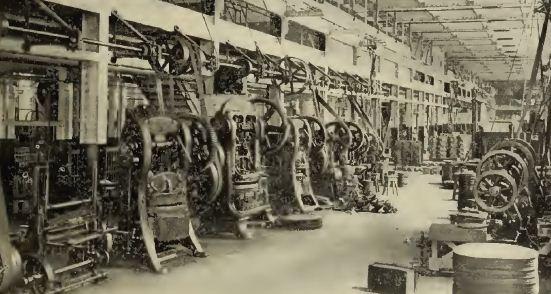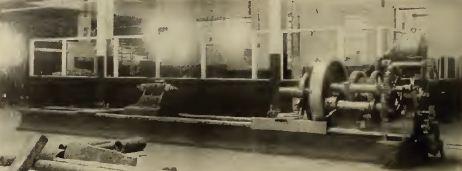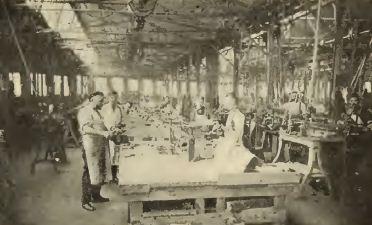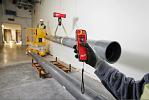- FMA
- The Fabricator
- FABTECH
- Canadian Metalworking
Looking back: Plant tours
In 1905, every issue included a section called Modern Canadian Manufacturing Plants.
- By Canadian Metalworking
- September 22, 2015
- Article
- Metalworking
For as long as this magazine has been around, pages in each issue have been devoted to exploring the inner workings of manufacturing plants across the country. As we continue to celebrate the 110th anniversary of Canadian Metalworking, in this issue we’ll revisit a couple interesting plant tours from the first year of publication in 1905.
Every issue that year included a section called Modern Canadian Manufacturing Plants. Sites visited in 1905 included: The Allis-Chalmers-Bullock Works in Rockfield, Que., a manufacturer of electrical machines; Waterous Engine Works in Brantford. Ont.; Canadian Pacific Railway’s Angus Shop in Montreal (twice); Canada Car Company’s plant in Montreal, a manufacturer of train cars; The Northern Electric Co. Ltd. in Montreal, maker of telephones and switchboards; Matthews Bros. Ltd. in Toronto, a picture frame maker; and the Packard Electric motor car plant in St. Catharines, Ont., featured in our last issue.
All of the tours included sections about the building construction, plant layout and in most cases a detailed listing of equipment on the shop floors. Two tours stand out:
CANADIAN WESTINGHOUSE COMPANY
The review of the Westinghouse facility was glowing: “the new works are a model of economy and effectiveness for the manufacture of electrical machinery.”
The decision to set up a shop in Canada was applauded: “So great have been the exports of the Westinghouse products to Canada that an examination into the conditions of a few years ago led to the decision to establish a separate company with manufacturing.
The punch department at the Canadian Westinghouse Co. works in Canada, Hamilton being chosen because of its all-round advantages.”
Products being manufactured in the Hamilton plant included: “alternating and direct current generators and motors, including railway motors; controllers, transformers, switches and switch-boards; rheostats, measuring instruments, including meters; arc-lamps and various subsidiary lines.”
When describing the design and construction of the building itself, attention was paid to the comfort of the workers:
“A creditable feature of the general plan is the splendid arrangement for the convenience of employees. Of this equipment the toilet rooms are the most noticeable…The equipment throughout is of enamelled iron, and hot and cold water is always to be had.”
Detailing the equipment on the shop floor, there is a listing of drill presses, milling machines, planers, and boring mills. “One of the most striking machines in the shop is an 8 spindle adjustable drill, made by the Baush Machine Tool Co.…and an accompanying item of interest is a special boring and milling machine combined, made by the Bement- Pond Machine Tool Co.”
In the punching department machinery consisted of “straight and other types of shears made by Brown-Boggs, Limited, Hamilton, and of a line of punch presses of different sizes, half of which were supplied by the Toledo Machine Tool Co. and the other half by the McGregor, Gourlay Co.”
The article walks readers through each department including shafting, bearing, screwing, testing and finally the tool room.
In summing up the tour the author was thoroughly impressed: “In the plant of the Canadian Westinghouse Co. are exemplified the most modern ideas of industrial construction and operation, and the works are certainly a valuable addition to Canada’s industries.”
THE ROBERT MITCHELL COMPANY
The tour of the Robert Mitchell Co. in Montreal, manufacturers of brass goods of all kinds, was taken shortly after the company had moved in and was impressive in scale. “The new factory occupies a whole block, the buildings being 180 by 400 ft., fronting on Belaire Ave., St. Henry, Montreal, and touching St. Antoine street on the north-west and St. James street on the southeast, on each of which a line of the Montreal Street Railway runs.”
As described, the walls of the building were brick and for the main building a large part of the surface was glass.
“This, together with a saw-tooth roof, supplied with windows facing the north, makes the place unusually bright within.”
A note was made of steps taken to ensure the comfort of the workers: “A commendable feature of the plant is the attention that has been devoted to the comfort and well-being of the workmen...the roof was so arranged that no direct sunlight could enter to interfere with the work.
“In addition to having cheerful and well-lighted shops, lavatories have been provided in the basement, installed with the latest improvements known in plumbing practice.
White enamelled hand basins provided with hot and cold water have been put in, and at these nearly one hundred men may wash at one time.
“There is also a large lunch and reading-room, well lighted and heated, 150 by 50 feet, generously provided with tables and chairs, lockers for the workmen’s clothes, and gas stoves for making tea or coffee during the noon hour.
“Another feature in this connection is the exhaust ventilating system for carrying away all dust from the emery and bucking machines in the cleaning and polishing departments. This is no doubt a guarantee of better health on the part of those employed, and more efficient service, which attention to the comfort and well-being of the workmen could well be followed by many another industrial establishment.”
This shop included a foundry along with a cleaning and polishing department where the rough castings were cut and then put through rumblers. Parts then went to the emory wheels to be trimmed, polished or buffed and sent for plating.
The shop made lamps, valves and gas meters. During the writer’s visit there were about 2,000 gas meters in different stages of completion. “This department has a capacity of 350 meters a week, and from it has been supplied over 15,000 meters to one gas company alone in Canada.”
The plant had a copper shop for the manufacturing goods such as copper tanks, ordinary kettles and tank kettles. There was also ornamental iron work done in the facility, forging iron lamps, iron grills for “bank and office counters,” as well as door and window grills.
Highlighted by the hot and cold running water at the employees’ disposal, this is another plant that scored high in 1905.
“While there are many larger manufacturing plants and industrial companies in Canada, there are many points in connection with the factory described that might serve as an example for others.”
About the Author
subscribe now


Keep up to date with the latest news, events, and technology for all things metal from our pair of monthly magazines written specifically for Canadian manufacturers!
Start Your Free Subscription- Industry Events
ZEISS Quality Innovation Days 2024
- April 15 - 19, 2024
Tube 2024
- April 15 - 19, 2024
- Düsseldorf, Germany
CTMA Economic Uncertainty: Helping You Navigate Windsor Seminar
- April 30, 2024
- Windsor, ON Canada
MME Winnipeg
- April 30, 2024
- Winnipeg, ON Canada
CTMA Economic Uncertainty: Helping You Navigate Kitchener Seminar
- May 2, 2024
- Kitchener, ON Canada























